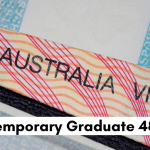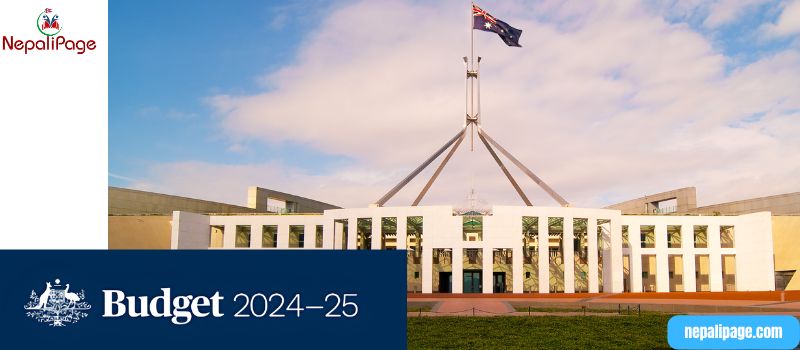For a business degree – the most common course for international students – Group of Eight universities charge around $50,000 annually.

Peter Hurley, Victoria University
[divider style=”solid” top=”10″ bottom=”10″]When Australia’s borders slammed shut during COVID, international students were among those who were stranded. This disrupted lives and studies, and put a major revenue stream for Australian universities in doubt.
The latest data shows international students are returning to Australia. Since international borders reopened in December 2021, the number of overseas students in Australia has risen by more than 120,000.
Applications for student visas – an indicator of future student numbers – are also at record levels.
But this growth is not shared equally around the university sector. It is the larger, more prestigious universities that are likely to benefit the most from students coming back.
Last week’s 2022-23 budget included Labor’s election policies to increase university places by 20,000 and provide 180,000 fee-free TAFE spots.
But away from the budget headlines, we need to look at Australia’s international education policy (which determines where international students study and what they pay). This will have the biggest impact on funding for universities and TAFEs.
Read Also: Why international students need to make Aussie friends
Students are coming back
Before COVID, there were about 580,000 international students living in Australia.
When Australia began to close its international borders in January 2020, many international students were in their home countries during the semester break. Because of this, thousands were left stranded outside Australia.
Despite repeated attempts by universities and governments to bring them back, current and new international students were largely unable to enter the country. By December 2021, the number of international students in Australia had more than halved to about 250,000.
The lifting of travel restrictions and quarantine requirements for fully vaccinated non-citizens in mid-December 2021 halted the decline.
By October 2022, international student numbers in Australia had grown back to about 370,000. There are still more than 72,000 international student visa holders outside Australia. About half these are Chinese international students, who are still subject to travel restrictions in their home country.
Visa numbers are a good sign
It will take some time for international student enrolments to return to pre-pandemic levels.
This is because the pandemic disrupted the pipeline of students. Students typically study for two to four years. Without new students to replace those finishing their courses, international student numbers fell.
This also means the losses experienced during the pandemic will be felt for several years. But there are encouraging signs.
One way to measure future demand of international students is through the number of student visas granted. Student visas are a leading indicator because students require a visa before they can enrol.
Student visas granted for July and August 2022 are the highest they have been compared to previous years.
Visas for students from China and India, two of Australia’s biggest markets, have returned almost to previous levels. Applications from other countries are growing, too.
Part of this may be due to policies that make Australia a more desirable study destination. Australia, like the United Kingdom, has increased access to post-study work rights. This means students in some courses can stay for longer in Australia after they have finished their course.
The Australian government has also temporarily relaxed working restrictions, removing the cap on the hours international students can work.
Why are international students so important?
International students are a vital resource for Australia’s higher education sector. No university could function as they currently do without the revenue from international student fees.
In 2019, before the pandemic hit, international student revenue was A$10 billion across the university sector.
But this resource is concentrated in certain institutions. And it is the larger and more prestigious universities that benefit the most.
The most prestigious (the so-called “Group of Eight” universities) account for more than half of the revenue universities receive from international students.
This is because these universities, which include the universities of Sydney, Melbourne and Queensland, can charge more due to their prestige, higher rankings, greater resources and favourable location.
For a business degree – the most common course for international students – Group of Eight universities charge around $50,000 annually. This more than double what some other universities charge for the same course. For the same local student, universities receive $15,600.
The revenue international students bring is enormous. For example, in the recent budget, the Albanese government announced $485 million over four years for 20,000 extra places for local students. In the four years before the pandemic, universities increased their international student revenue by $4.6 billion. Group of Eight universities accounted for half this increase.
Increasing gaps between universities
The disparity risks encouraging a form of what researchers call “residualisation”.
This occurs when students from more economically and educationally advantaged backgrounds are able to enrol in more prestigious, well-resourced universities.
Revenue from high-paying international students is used to subsidise other activities across these universities, such as research. The extra revenue enables greater investment in infrastructure, which also increases a university’s attractiveness as a study destination for local and international students.
The smaller universities, which often cater for more disadvantaged cohorts, miss out. Lower enrolments and less resources also mean these smaller universities face additional challenges such as limited subject offerings and less student support services.
It is a similar problem in the vocational sector, where only 5% of international students study at TAFE colleges. This means TAFEs don’t receive much needed revenue.
What happens now?
The reasons for the lopsided benefits are complex. International education policy is intertwined with migration policy – all international students are temporary migrants. Access to the labour market and the relative status of certain institutions all play a role in driving student choice.
But the value of international students to Australia’s education sector and the resources they bring are vital.
Finding ways to ensure the benefits are spread more evenly would go a long way to making the sector more equitable.
![]() [divider style=”solid” top=”10″ bottom=”10″]
[divider style=”solid” top=”10″ bottom=”10″]
Peter Hurley, Director, Mitchell Institute, Victoria University
This article is republished from The Conversation under a Creative Commons license. Read the original article.











